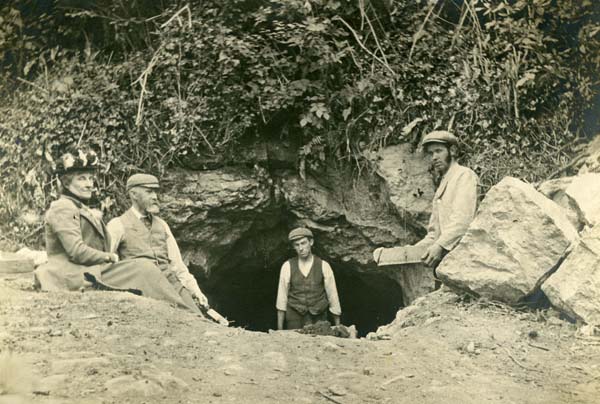Unknown
Spotted Hyena Skull
Fossil skull of a spotted hyena from an Irish cave.
By Ana Queiros
The label on this specimen reads:
“F21522, Crocuta crocuta (Erxleben, 1777), Incomplete skull of spotted hyena, Plot MD.239; Mammoth Cave, Castlepook, Co. Cork; Pleistocene, Quaternary; Gift: RIA Cave Excavations Committee.”
This specimen consists of an incomplete skull of the animal. It is part of a collection of fossil bone material found in Irish caves and is used in scientific research.
Why is it in the Museum?
The specimen was donated to the Museum in 1906 by the Royal Irish Academy, more precisely, by the Committee appointed to explore Irish caves.
Where does it come from?
This skull was found in Castlepook Cave (also known as Mammoth Cave) near Doneraile in County Cork.
The cave was excavated between 1904 and 1908 during which time a large collection of bones of spotted hyena and other animals were found. It is the most important site in Ireland where mammal remains from the last cold stage have been found.

Figure 2: Entrance to a cave near Ennis, Co. Clare, which was excavated at around the same time as the Castlepook Cave
How old is it?
Radiocarbon dating of an associated bone, interpreted in the context of changes in climate and sea-level, leads scientists to believe that spotted hyena and other mammals migrated from Britain to Ireland around 45-30,000 years ago (see reference below). This places them at the end of the Pleistocene, a geological age which covers the recent period of repeated glaciations. Dating and studying fossil remains such as these enables scientists to identify the different cycles of glaciation and interglaciation. It is also useful in understanding the relationships between different groups of animals within each time period.
About the African spotted hyena
Spotted hyenas are no longer present in Ireland and continental Europe but they are the most abundant large carnivore in Africa. They occur throughout sub-Saharan Africa in a variety of habitats such as semi-desert, grassland and woodland. Its conservation status is “least concern” due to their wide distribution and high number of individuals. However, populations outside conservation areas are declining because of human persecution and habitat loss. These make the survival of the species ever more dependent on the existence of protected areas.
Learn more…
This particular specimen is part of the research collection and thus not on public display. On the ground floor of the National Museum of Ireland - Natural History, there is a display case entitled ‘Animals from the Ice Age (1)’ where you can see three jaw bones of spotted hyenas and a partial skull. A mounted specimen of the African spotted hyena is also on exhibition on the first floor.
-
Sutcliffe, Antony J. (1985). On the track of Ice Age mammals. London: British Museum (Natural History)
Visit the IUCN Red List to find out more about endangered species.
Location:
Spotted Hyena Skull is located at:
In Storage
Previous artefact:
Next artefact:
